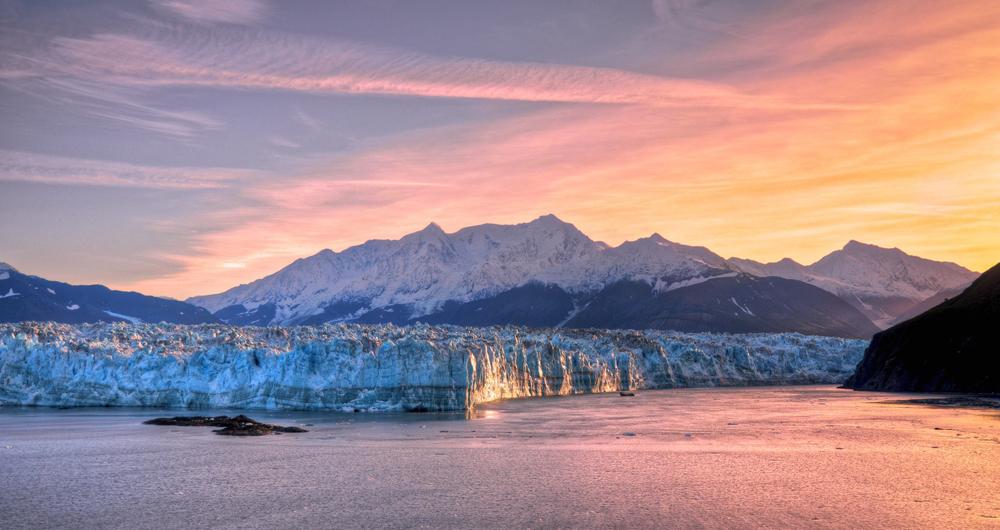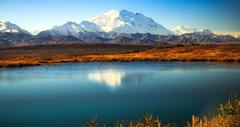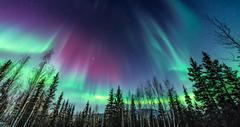Alaska is famous for its stunning scenery, giant glaciers, pristine forests, romantic lodges and abundant wildlife. See the highest mountain in North America, watch the Northern Lights, drive along the 1,500-mile Alaska Highway, and explore Alaska’s charming towns and cities, including Juneau, Anchorage, Ketchikan and many others.
Denali National Park
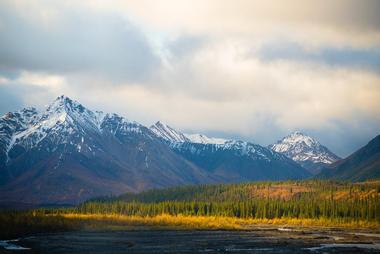
Denali National Park is located in central Alaska with the Denali Mountain at its heart. Denali, one of the top Alaska destinations, is part of the Alaska Range, and, with its highest peak at 20,310 feet, it is the highest mountain in North America. The upper part of the mountain is always covered with snow and glaciers, and the temperatures can reach minus 75 degrees Fahrenheit. In spite of the extreme cold, the mountain and the park are home to many animals, among them 39 species of mammals and 169 species of birds.
Denali National Park’s flora varies depending on the altitude, from taiga and mixed forests at the lower slopes, to tundra below the snowline. In the summer, the slopes of the mountain are covered with some 650 species of flowering plants. According to archeologists, Athabascan people have been living in the park area for thousands of years. Denali National Park is one of the most famous places to visit in Alaska and about 400,000 people come to visit the park every year.
Ketchikan

Ketchikan is located on Revillagigedo Island in the Tongass National Forest, a 17-acre rainforest full of Sitka spruce, cedar, waterfalls, and diverse wildlife. Ketchikan is the southernmost Alaskan city backed by forested slopes of Deer Mountain and facing Tongass Narrows waterway, which is buzzing with fishing boats, floatplanes, ferries and barges.
The city hugs the bluffs along the shoreline for 31 miles, and many businesses are located over the water and can be reached via suspended walkways. Native Haida, Tlingit, and Tsimshian arts are visible everywhere throughout Ketchikan, in museums, and in totem parks. Ketchikan, one of the best towns to visit in Alaska, is famous for its salmon fishing and known as the salmon capital of the world. Check out the
- Blueberry Arts Festival in August.
Mendenhall Glacier
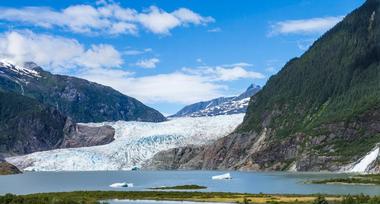
Mendenhall Glacier stretches 12 miles from the Juneau Icefield towards Mendenhall Lake and is one of the most famous Alaska tourist attractions. It is about half a mile wide, and the ice is between 300 and 1,800 feet deep. The glacier has retreated two and half miles since the mid-1700s. Its magnificent blue color of the Mendenhall Glacier comes from its crystalline structure, which affects how light reflects off the ice.
The best way to see the glacier is by kayaking up to its face or from a helicopter. Among many popular glacier-related activities are ice climbing and exploring ice caves. There are also a few well-maintained hiking trails leading up to the glacier.
Glacier Bay National Park
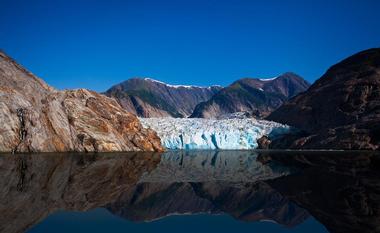
Glacier Bay National Park is part of a 25-million acre World Heritage Site, and it is one of the largest protected areas in the world. It is located where the North American and Pacific tectonic plates collide and the coastal mountains, three miles high, are still rising.
Glacier Bay covers more than three million acres of mountains, glaciers, rainforest, rugged coastlines, and deep fjords, and is one of the best things to do in Alaska. The landscape is constantly changing; glaciers continue to advance and retreat, dramatically affecting the landscape.
The Alaska Marine Highway offers easy access to the park from Juneau. Bartlett Cove, close to the park headquarters, is located in a lush coastal temperate rainforest. It is a great place for biking, hiking, boating, and fishing. You can also take one of the daily boat trips to see the glaciers.
Hubbard Glacier
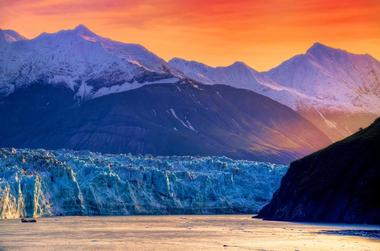
Hubbard Glacier is located about 200 miles northwest of Juneau off the coast of Yakutat in Wrangell St. Elias National Park, and is one of the best places to visit in Alaska.
It is enormous – about six miles wide at the point where it meets the ocean - and is constantly active, In fact, its two surges in the last 30 years turned the Russell fjord into a lake and almost flooded Yakutat. Hubbard Glacier’s frequent calving is dramatic, and its face, which can be observed from many visiting cruise ships, is about 400 feet tall.
Talkeetna
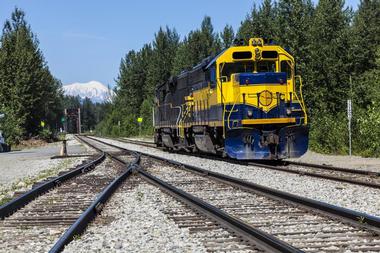
Snuggled at the base of Denali or Mt. McKinley, the tallest mountain in the country, Talkeetna is a historic town that is an excellent starting point from which to experience true Alaska. Just taking photos of the towering Alaska Range is a treat. Near Talkeetna, you can go fishing, hiking, skiing, mushing, and mountain climbing, take a ziplining tour, or visit great art galleries, excellent restaurants, and local craft breweries. Talkeetna is a frontier town like none other.
Where else can you still find people panning for gold or old log cabins built by gold miners more than hundred years ago that are still standing strong? Take Alaska Railroad to Talkeetna and experience a piece of history.
Skagway
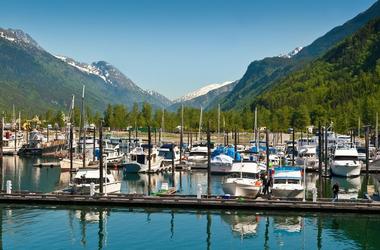
You can almost feel the frenzy of the gold rush in Skagway. Wooden sidewalks, old saloons and shops, and people dressed in clothing from the end of 19th century greet visitors today just as they did during the town’s heyday when over 40,000 people descended on Skagway on the way to Yukon in the hopes of getting rich quickly.
Today, it is all part of the grand natural museum that is Klondike Gold Rush National Historical Park. Today’s gold rush consists of thousands of tourists who arrive during the summer on many cruise ships to experience a piece of history. Take a 45-minute tour of the Skagway historic district with one of the National Park Service rangers or take one of many hiking trails to the cold alpine lakes and waterfalls around the city. You can also take the popular Chilkoot Trail for an exciting three- to four-day hike that follows the route of the gold rush stampeders on the way to the Klondike Gold Fields.
Sitka
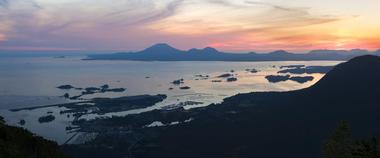
Sitka is little Alaskan treasure of an island rich in nature, culture, and history. Located on the picturesque Baranof Island in the Alexander Archipelago, Sitka is surrounded by snow-covered mountains hidden by old pine forests growing to the waters’ edge and myriads of little islands in the archipelago that greet thousands of tourists every summer.
It is the town where Americans came to buy Alaska from Russians, an event that is celebrated with much gusto every year. The culture of Sitka’s native original inhabitants provides much of the city’s vibrance. The spectacular surrounding nature is ideal for outdoor exploring. Hike through the spruce and hemlock rainforest to see the American bald eagle, black-tailed deer, or brown bears at the Fortress of the Bear. Alternatively, you can take a boat trip to see humpback whales, sea otters, sea lions, and thousands of birds. Check out the Sitka WhaleFest November 1st-3rd, 2024.
Homer
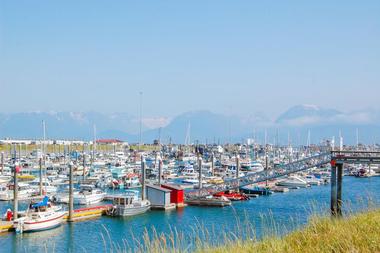
Homer is a quirky, charming little town on the shores of Kachemak Bay on the southern Kenai Peninsula in South Central Alaska. Homer is quite a long drive from Anchorage. It is famous for its great fishing (the town is known as the halibut world capital), spectacular nature, and excellent art and culinary scene. Most of the life in Homer revolves around the Spit, the 4.5-mile long road on the sand bar that leads straight into the beautiful blue bay.
Shops and restaurants line this popular road. The Kenai Mountains to the east and north not only provide magnificent backdrop but also protect the town from the cold, creating an exceptionally mild climate. Almost any road out of town ends as a hiking or biking trail, taking you into the picturesque wilderness. Go fishing, like everyone else in town, explore the natural landscapes, or take a boat tour to see the rich marine life.
Northern Lights in Fairbanks
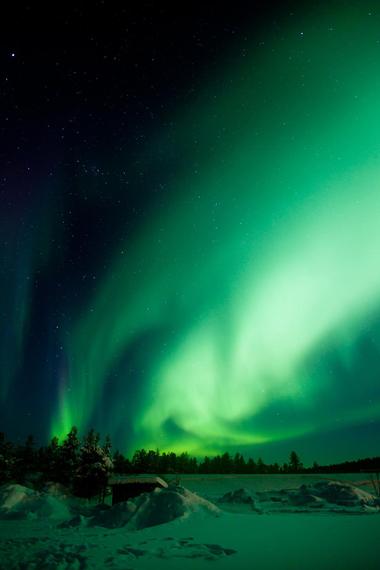
The mysterious curtain of swirling, flowing, ever changing purple, yellow, green, and red lights that brighten the night skies is known as the Northern Lights or the Aurora Borealis. Offering a wealth of things to see and do, Fairbanks, Alaska, is also one of the best places on Earth to watch this magical spectacle of nature. The town has two things going for it: it is located in the area around North Pole called Auroral Oval, and its continental climate allows for more clear nights than other places on the coast. In this area, the lights appear more often and are more vivid and mesmerizing than almost anywhere else. The best time to experience it is late at night or early in the morning. Take a dog sled or a horse-drawn sleigh to enjoy northern lights in comfort. You can also ask your hotel staff to wake you up when the show starts.
Fairbanks events:
- Midnight Sun Festival - Fairbanks, Every June
- Tanana Valley State Fair - Every July
- Fairbanks Summer Arts Festival - Every July
- Golden Days - Third week of July
- World Eskimo-Indian Olympics - Mid July
Anchorage
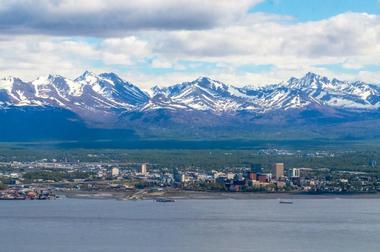
Anchorage is undoubtedly one of the must-see destinations to include on any Alaskan itinerary. A place where bright blue skies glisten about sparking glaciers and snow fields, Anchorage is the gateway to the majesty of Alaska. The city is located on the homelands of the native Dena’ina Athabascan people and skillfully combines most of the best elements of the country. Welcome to exceptional natural beauty, the amazing phenomenon of the Northern Lights and jaw-dropping outdoor recreational facilities without having to give up your urban comforts. But it’s not all about nature – Anchorage is also rich in cultural and artistic attractions.
Anchorage events:
- Iditarod Sled Dog Race - First Saturday in March
- Fur Rendezvous Festival - February 20 - March 2, 2025
- Anchorage RunFest - August 16 & 17, 2025
Valdez
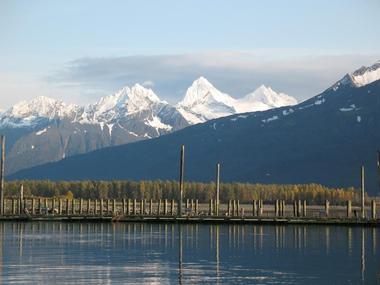
The city of Valdez lies in Port Valdez at the head of the 11-mile long fjord in the Prince William Sound. It is small city and one of the most important ports in Alaska for both fishing and commercial purposes. It is also an oil terminal for the Trans-Alaska pipeline.
For thousands of years, the Chugach and Ahtna native peoples used the area for trading jade, copper, furs, and fishing. The protection of the nearby Chugach Mountains keeps the port ice-free year round. With tidewater glaciers, waterfalls, majestic mountains, rainforests, and abundant wildlife on land and sea, Valdez is a popular tourist destination for those looking for action.
Seward, Alaska
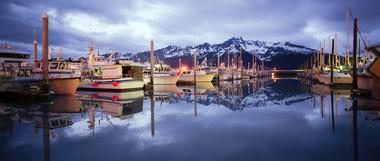
Seward is located at the foot of majestic Mount Marathon on the shore of Resurrection Bay on the Kenai Peninsula. For centuries, Seward, Alaska ’s ice-free harbor has served for as a gateway to Alaska’s huge, wild and resource-rich interior. The town served as a natural starting point for gold seekers during the gold rush, and the dog sled trail that led from Seward to the gold fields in Iditarod is now the location of the famous Iditarod Sled Dog Race.
Visit Kenai Fjords National Park, deep glacial lakes, the Harding Icefield, take a kayak tour, participate in a dog sled race, go fishing for salmon or halibut, or take a small plane tour and see everything there is to see from the air. Visit during the Seward 4th of July Celebration for extra fun.
Haines
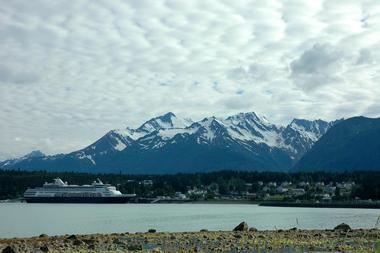
Haines is located in a deep fjord on a narrow peninsula in northern Southeast Alaska. Like so many others, Haines was built on a trade route of Chilkat Indians, also used by gold seekers going north into Canada. This spectacularly beautiful little town is surrounded by 20 million acres of wilderness protected areas, with magnificent Takinsha Mountains towering above town and the famous Chilkat Bald Eagle Preserve on the outskirts.
The most dominant feature of the city is Fort William H. Seward, which is today home to galleries, shops and homes. The town is famous for its large number of artists and totem carvers, as well as the curious Hammer Museum, containing a collection of 1,500 hammers.
Tracy Arm Fjord
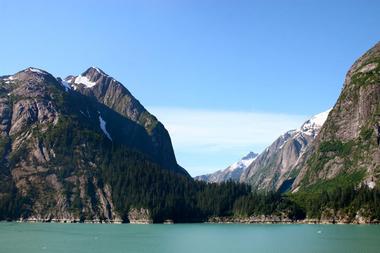
Tracy Arm Fjord is located 45 miles south of Juneau and is part of the Tongass National Forest. It is one of two deep and narrow fjords in the Tracy Arm-Fords Terror Wilderness. Tracy Arm Fjord is more than 30 miles long, and one-fifth of it is covered in ice. During the summer, the fjord has floating ice that ranges from small pieces to a three-story building size.
The most common access is by boat through Stephens Passage to Holkham Bay and from the bay to the fjord. Many tourist boats visit the fjord and North Sawyer and South Sawyer, the two glaciers at its end. The base of the glaciers is a place where the visitors can see local wildlife such as brown and black bears, wolves, deer, harbor seals, and many birds.
Tongass National Forest
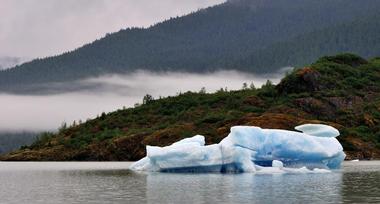
Tongass National Forest covers 17 million acres, which is most of Southeast Alaska. It is the largest national forest in the United States. Most of it consists of a temperate rain forest rich in wildlife and rare flora. The area is very diverse and ranges from Alexander Archipelago islands and numerous fjords and glaciers to the Coast Mountains. It is home to 75,000 people, and the largest city in the area is Juneau.
Three Native Alaska nations live in the area: the Haida, Tlingit, and Tsimshian. Tongass National Forest represents the true wild Alaska, and it offers the unique opportunity to see bears, eagles, and salmon, and to take a sled-dog ride across a glacier, hike through boardwalk trails, and to fish in the ocean or in the wild streams.
Alaska Highway

The Alaska Highway is a 1,500-mile long wide-open road from Dawson Creek in British Columbia to Delta Junction in Alaska. It was carved from rock and deep forests in only eight months. As you drive through Alaska Highway, you will see some of the most magnificent national parks in both Canada and the United States.
The farther north and west you go, the more spectacular the mountains will become. Along the road, you will encounter bears, moose, wild sheep, and bison. You can find great fishing holes, pan for gold at the MacBride Museum in Whitehorse, walk the trestle bridge at Pouce Coupe.
Columbia Glacier

Columbia Glacier is located a short boat ride from the port of Valdez in Prince William Sound. At some points, the glacier is more than 550 meters thick, and it covers 400 square miles. It stretches for 32 miles through the Chugach Mountains and ends in Columbia Bay.
This majestic glacier has been drastically retreating since 1982 and is losing 13 million tons of ice every day. In fact, some calving chunks are so enormous that they endanger the tourist boats that come to watch the spectacle. At its face, the glacier is up to 400 feet tall.
Kenai Fjords National Park
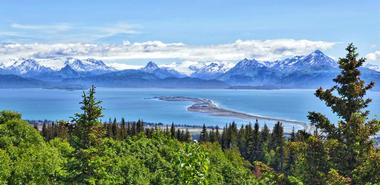
Kenai Fjords National Park is located near the town of Seward on the Kenai Peninsula. It covers an area of 669,984 acres. Its main feature is the Harding Icefield, which is accessible by foot along the Harding Icefield Trail.
About 40 glaciers flow out of the Harding Icefield, and rich marine and terrestrial wildlife live in the park. You can see moose and bears when hiking to the Exit Glacier or whales from the boat, as there are many boat tours from Seward. You can also rent a kayak and explore on your own.
Matanuska Glacier
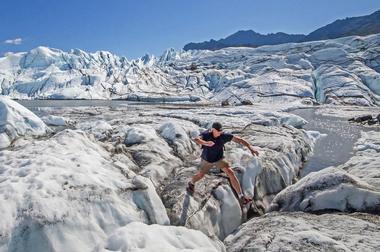
Matanuska Glacier starts from the Chugach mountain range in the South Central Alaska and is part of the Matanuska State Park. It is the biggest Alaskan glacier accessible by car - you can see it from Glenn Highway after a short two-hour drive from Anchorage. It is 26 miles long and 4 miles wide at the point where it ends.
It is called a valley glacier; it flows like a river pushed by its own weight through the valley. The best way to see the glacier up close is from private Matanuska Glacier Park. You can walk across the glacier on your own or in the company of a trained guide.
Girdwood
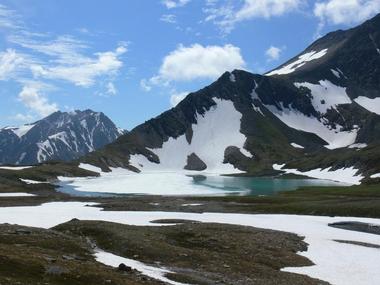
Girdwood is a lovely Alaska mountain town surrounded by the peaks of the Chugach Mountain Range and surrounded by lush old forests and seven permanent glaciers.
It is located only 36 miles south of Anchorage and offers year-around recreational opportunities. It is the town to come for great Nordic skiing, dog mushing, snowmobiling, fishing, hiking, biking, wildlife viewing, rafting and so much more. Visit Chugach Powder Guides for snowcat and helicopter skiing or Alyeska Resort for the scenic Aerial Tram to see breathtaking views of the water and hanging glaciers.
Girdwood events:
- Girdwood Forest Fair - First weekend in July
- Alyeska Resort Blueberry Festival - Every August
- Alyeska OctoberFest - End of September
Black Sand Beach
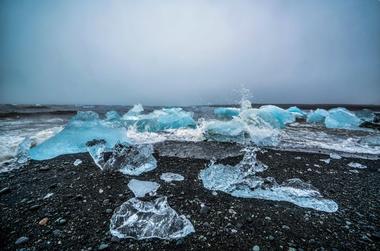
Out in the Glacier Bay National Park, Black Sand Beach is named due to the beautiful black sands found here. They’re not quite as soft to touch as the sort of sands you’ll find on white or golden beaches, but they’re incredible to look at. Visitors will also be able to marvel at the magical views in every direction, with snow-capped mountains and stunning icy spots all around. The views at this beach are quite possibly the best in all of Alaska and you'll definitely want to bring your camera along to snap some photos to share with your friends. This beach is also a good camping and kayaking spot, so there are plenty of activities to enjoy here.
Fort Abercrombie State Park
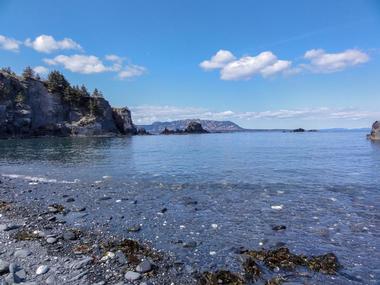
Stretching out over 182 acres in total, Fort Abercrombie State Park is one of the best and most beautiful recreational areas in all of Alaska. The park is filled with a wide variety of landscapes including forests, hiking trails, rocky areas, and sandy beaches. You can even find a lot of old World War II military outposts dotted around the park, making it a nice spot for explorers and history enthusiasts, and there's plenty of fascinating flora and fauna to be admired as well. As for the beaches themselves, they all offer soft sands and outstanding views, and since the park is so large, you can almost always find a little private spot just for you and your friends.
Schooner Beach
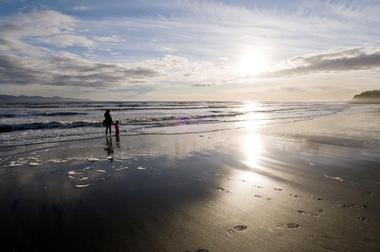
Schooner Beach is a very special beach for several reasons. The first thing that makes this beach special is the presence of the Satsuma Maru, a schooner that crashed onto the shore many years ago and still remains as an exciting wreck to admire and explore. You'll also find some really good surfing conditions at this beach, so if you've got the skill and courage needed to brave the Alaskan waters, this is a great place to ride some waves. Even if you're not interested in surfing, it can be thrilling to sit on the sand and watch the surfers out on the water, taking photos and strolling along the sands as the day passes by.
The Homer Spit
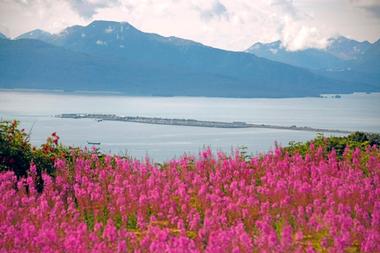
One of Alaska's best known beaches, The Homer Spit is a highly popular fishing and boating area. You'll see dozens of different boats in the local docks and out on the waters at every time of day and night, and the local area is equipped with lots of useful stores, restaurants, rental places, and more, so there's always plenty to do at this Alaskan beach. The town is also known as one of the best places in all of North America to go fishing for halibut, and the beach is dog-friendly too so you can bring your four-legged friend along for some fun in the sun.


